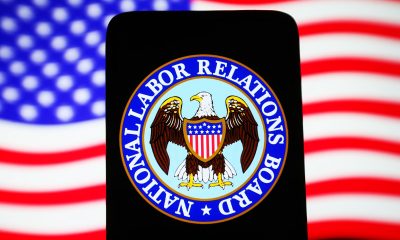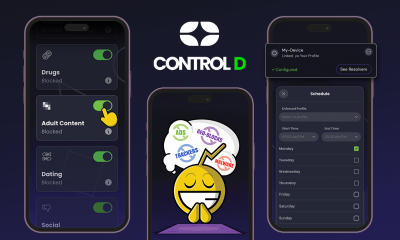Personal Finance
Can I purchase I Bonds from my tax refund? What to know about rates, deadline, restrictions

Inflation may be painstakingly inching downward but savers still can pick up a decent deal on I Bonds — if they act before the end of April.
As we’re in the middle of tax season, it’s good to realize that there’s a way to file a form with your tax return and direct part or all of your tax refund — up to $5,000 — to be used to buy Series I Savings Bonds, known as I Bonds. But it’s not a bad idea to file that return soon so that you can lock up a strong rate, too.
Yet, make no mistake, buying I Bonds now isn’t the load-up-the-cart no-brainer that it was when I Bonds turned trendy in 2022. We’re talking about solid rates now but there are many unknowns for rates ahead.
Why I chose I Bonds:I wanted to protecdt my sons’ inheritance from 40-year-high inflation.
Savers fight back:Fear the Fed’s rate raise? Here’s what to do
What is the rate for I Bonds?
If you buy I Bonds before the end of April, you’d start out with an annualized rate of 6.89% that would apply for six months after buying the bond. The starting rate applies for I Bonds issued by the Treasury Department from Nov. 1, 2022, through April 30.
Those bonds carry a 0.4% fixed rate, which is a floor rate that applies for the life of the bond. The inflation-influenced annualized rate of 6.48% is then added on top of the floor. Then, the annualized rate rounds up to 6.89%.
The 6.48% annualized rate will apply to a six-month stretch for savers who are holding onto older I Bonds, too, including even those issued 10 years or 20 years ago as new inflation adjustments are made regularly.
The limitations: I Bonds cannot be cashed at all in the first 12 months. If you cash them before the five-year mark, you’d lose the most recent three months of interest. If inflation were super-low, you’d lose a minimal amount of interest.
We don’t know what we don’t know about where inflation is heading in the short run, even though it appears to be gradually trending downward in the long run.
“It’s just kind of jumping all over the place these days,” said Daniel Pederson, a Michigan-based savings bond expert and founder of www.BondHelper.com.
What to know about I Bonds
A key point to understand, Pederson said, is that the inflation adjustment for I Bonds focuses on a short six-month window for inflation data — not a full year.
“With I Bonds, you always have this six-month lag you’re working with,” Pederson said.
Buying before the end of April makes sense, Pederson said, because it locks in a 6.89% annualized rate for six months. Given that monthly inflation data has been harder to predict this year, it’s tougher to predict what’s ahead for the new rate announced May 1.
The inflation-adjusted rate to be announced on that date, which would apply to bonds bought from May through October — is likely to be lower and could range significantly from 2% to slightly above 5%, depending on the actual inflation data, Pederson said.
The I Bond rate is set twice a year, Nov. 1 and May 1. The latest inflation data — what’s available for October, November, December and January — suggests a lower rate will be announced in May.
What is the rate of inflation?
Earlier this month, the Labor Department reported that its consumer price index, which measures what consumers pay for a wide range of goods and services, rose 6.4% in January over the last 12 months.
On a month-to-month basis, the inflation index rose 0.5% in January after increasing 0.1% in December.
Inflation remains an ongoing headache for consumers, even after the Federal Reserve has aggressively raised rates eight times in less than a year to cool things down.
January’s results shouldn’t have been a complete suprise, said Omair Sharif, founder and president of Inflation Insights in Pasadena, California.
“Given that recession talk has been everywhere the last few months, it’s not surprising that firms took the opportunity to push through price increases,” Sharif wrote in an alert. After all, he said, it might have been their last chance to raise prices before the economy softened.
Inflation has slowed since hitting a year-over-year peak at 9.1% in June — the largest increase in 40 years. As inflation heated up last year, I Bonds grabbed headlines when savings bonds bought from May 2022 through October 2022 paid an annualized rate of 9.62% for a six-month period. Interest is compounded semiannually.
How to buy I Bonds with a tax refund
Savers are allowed to buy up to $5,000 of I Bonds directly if they’re receiving a tax refund when they file their 2022 tax returns. You file Form 8888 with your tax return and complete Part 2 to request that your tax refund be used to buy paper bonds.
The $5,000 limit relating to tax refunds is on top of the annual $10,000 limit per individual. Theoretically, a single person could buy up to $15,000 in I Bonds in a year if they had a sizable federal refund due. A married couple could buy up to $25,000 in a single year this way.
Without tapping into a tax refund, single savers can buy up to $10,000 in electronic I Bonds or up to $20,000 per married couple each calendar year.
If you bought the annual maximum allowed for I Bonds in 2022, you can buy more I Bonds in 2023.
Using a tax refund to directly buy I Bonds is the only way you can buy paper savings bonds; otherwise, you can buy I Bonds online through TreasuryDirect.gov.
Paper I Bonds are issued in denominations of $50, $100, $200, $500, and $1,000. You might receive more than one paper bond to fill the order. TreasuryDirect determines the denominations sent.
The IRS notes that a taxpayer doesn’t need to have a bank account to buy I bonds with a federal tax refund. “If you purchase I bonds with your tax refund, you can elect to have any remaining refund amount not used to purchase bonds mailed to you as a paper check,” according to an IRS alert.
You don’t have to dump that entire tax refund into I Bonds — which are viewed as a safe investment.
An example: If you’re owed a $2,500 federal refund, you could direct that $1,000 toward I Bonds. And then direct the IRS to put the rest in your savings or checking account or elsewhere.
You can buy savings bonds for others, say a grandchild. You’d designate ownership or co-ownership for someone else or elect a beneficiary using Form 8888. Carefully read the instructions for Form 8888 to understand rules and restrictions. The paper bonds will be mailed to you at the address on file with the IRS.
How are savings bonds taxed?
Don’t dig through your mail for a 1099 just because you bought I Bonds last year, as millions of people did.
Savers would receive a 1099 if they cashed a savings bond in 2022 or they owned a marketable security, which earned interest in 2022. You don’t get a 1099 just because you own I Bonds in paper form or online.
If you cashed an electronic savings bond in TreasuryDirect last year, the Treasury notes, your 1099 will be available in your TreasuryDirect account by Jan. 31. You’d need to log into your online account. Then take the following steps:
-
Select “ManageDirect” at the top of the page.
-
Under “Manage My Taxes”, choose the relevant year.
-
Near the top of your taxable transaction summary, choose the link to view your 1099.
If you mailed your paper savings bond to Treasury to be cashed and you received the money in 2022, the 1099 statement should have been mailed out by Jan. 31.
A key point: If you cashed your paper savings bonds at a local bank, Treasury notes, that bank should provide you with your 1099.
Savings bond interest is exempt from state and local income taxes but it is treated as taxable income at the federal level. Taxes are often deferred until you redeem the bond or it reaches its final maturity.
Savers have the option of tracking and claiming interest annually for federal income tax purposes. Some people do that but many don’t.
Savings bonds are not exempt from any applicable estate, inheritance, gift or other excise taxes, whether federal or state.
Tax breaks might apply to those who qualify when cashing a savings bond to pay education expenses. This applies to Series I or Series EE savings bonds issued after 1989 — and there’s a list of other rules to qualify, such as the person named on the bond must be 24 years or older when the bond is issued. So, Treasury notes, “a bond issued with a child’s name will not qualify even years later when the child is ready for college.”
When will I Bonds arrive after filing my taxes?
The IRS is first going to have to process your return. The quickest way to get a return processed is to file it accurately and electronically; don’t mail it.
Given the delays in the system, you don’t want to wait until the last minute, file a federal income tax return on April 18 to meet the deadline and then expect to have savings bonds issued by the end of April. It might have a May issue date or later if you wait too long.
The issue date for paper bonds will be the first day of the month in which IRS submits payment for the bonds to Treasury Retail Securities Services in Minneapolis, according to TreasuryDirect.gov. For example, if Minneapolis receives your order from the IRS on Feb. 18, the issue date of your savings bonds will be Feb. 1.
“If you e-file your tax return soon, chances are you’ll receive bonds with an issue date in March or April,” said Eric Smith, a spokesperson for the IRS.
“Once your savings bonds are issued, you should get them within three weeks.”
The IRS notes: “If you’re having a portion of your refund deposited directly into your bank account, you may receive your refund before your savings bonds arrive by mail.”
More of your 2022 tax season questions answered
-
Tax season 2023 officially started: Here are key deadlines to keep in mind
-
1099, W-4, W-2, W-9, 1040: What are these forms used for when filing your taxes?
-
What are the 2022 US federal tax brackets? What are the new 2023 tax brackets? Answers here
-
2023 tax season guide for new parents: What to know about the Child Tax Credit, EITC and more
-
IRS may owe you from 2020 taxes. Here’s why and what you need to do to find out if you’re owed
-
What is OASDI tax on my paycheck? Here’s why you and your employer pay this federal tax
-
Do you have to report crypto on taxes? Yes. Here’s what you should know about form 8949
-
What is a 1098-E form? What you need to know about the student loan interest statement
-
Tax season 2023: What exactly is the mileage rate? There’s more than one.
-
Is it better to pay someone to do your taxes or do them yourself? We’ll help you decide.
-
What is income tax? What to know about how it works, different types and more
-
Is Social Security income taxable by the IRS? Here’s what you might owe on your benefits
-
Companies can deduct full cost of business meals on 2022 tax returns
-
Who has to file a tax return: It’s not necessary for everyone. Here are the rules.
-
What is capital gains tax in simple terms? A guide to 2023 rates, long-term vs. short-term
-
Best way to receive your 2023 tax refund? IRS says direct deposit. Here’s how to do it.
-
What is FICA? How much you contribute to federal payroll taxes.
-
How much is the Child Tax Credit for 2023? Here’s what you need to know about qualifying.
-
A 30% national sales tax? Abolishing the IRS? What the FairTax Act of 2023 would do.
-
The Inflation Reduction Act carves out an EV tax credit for 2023. Does Tesla qualify?
Contact Susan Tompor: stompor@freepress.com. Follow her on Twitter @tompor.
This article originally appeared on Detroit Free Press: How to buy I Bonds with tax refund: What to know about rates, timing
Read the full article here

-

 Personal Finance7 days ago
Personal Finance7 days agoGas prices drop as demand for driving fizzles out: AAA
-

 Investing7 days ago
Investing7 days agoCrowdstrike CEO Responds to Causing Largest IT Outage in History
-

 Side Hustles7 days ago
Side Hustles7 days agoHow to Build A Startup, From an Early Lyft, Twitch Investor
-

 Passive Income7 days ago
Passive Income7 days agoThe Top 5 AI Tools That Can Revolutionize Your Workflow and Boost Productivity
-

 Passive Income5 days ago
Passive Income5 days agoNLRB Drops Expanded Joint Employer Appeal
-

 Side Hustles7 days ago
Side Hustles7 days agoJake Paul: Mindset Hacks, Mike Tyson Fight, Embracing Fear
-

 Investing7 days ago
Investing7 days agoBoeing to supply E-7 in first major win since plea deal By Reuters
-

 Side Hustles6 days ago
Side Hustles6 days ago10 Effective Growth Marketing Strategies for Your Startup


















